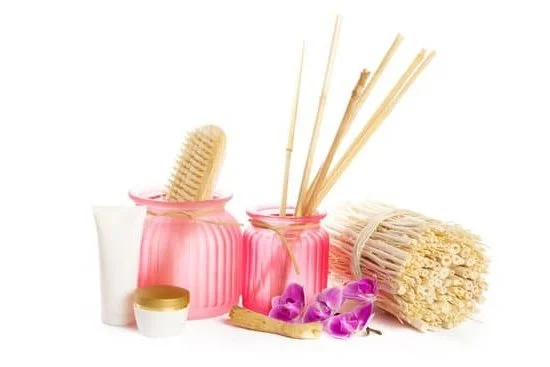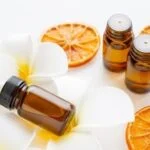Are aromatherapy oils safe for the body? Aromatherapy has been used for centuries as a natural and holistic approach to enhancing physical, emotional, and mental well-being. In this article, we will explore the safety of using aromatherapy oils on the body, understanding their composition, potential benefits, safety concerns, and risks. We will also provide expert tips and recommendations for safely incorporating aromatherapy oils into your wellness routine.
Aromatherapy oils are highly concentrated extracts derived from plants, flowers, herbs, and trees. These essential oils are known for their aromatic properties and therapeutic benefits. While they have gained popularity in alternative medicine, there are important considerations when it comes to using them on the body. Understanding the composition of aromatherapy oils is crucial in ensuring their safe and effective use.
When it comes to the potential benefits of aromatherapy oils for the body, research suggests that certain essential oils may have anti-inflammatory, antimicrobial, pain-relieving, and stress-reducing properties. However, it is important to note that not all essential oils are suitable for topical application or safe for every individual. Safety concerns and risks associated with aromatherapy oils must be carefully considered before incorporating them into your self-care routine.
Understanding the Composition of Aromatherapy Oils
Aromatherapy oils are derived from a variety of plants and their composition can vary widely. The most common types of aromatherapy oils include essential oils, carrier oils, and infused oils.
Essential oils are highly concentrated extracts obtained from different parts of plants such as flowers, leaves, stems, and roots. They are known for their strong fragrance and therapeutic properties. Carrier oils, on the other hand, are base oils that are used to dilute essential oils before applying them to the skin.
They help “carry” the essential oil onto the skin and also have their own therapeutic benefits. Lastly, infused oils are created by infusing plant material in a base oil such as olive oil or coconut oil over a period of time to extract its properties.
When it comes to understanding the composition of aromatherapy oils, it is important to note that the potency and purity of these oils can vary greatly depending on factors such as extraction methods, plant quality, and storage conditions. It is crucial for users to be well-informed about the composition of the specific aromatherapy oil they intend to use in order to ensure safety and effectiveness.
To gain a better understanding of aromatherapy oil compositions, here are some key points to consider:
- Essential Oils: Understanding the extraction process for essential oils and how it impacts their composition
- Carrier Oils: Exploring different types of carrier oils and their individual properties
- Infused Oils: Learning about the infusion process and its effect on the composition of infused oils
- Quality Control: Identifying indicators of high-quality aromatherapy oils
- Safety Precautions: Being aware of potential risks associated with certain compositions of aromatherapy oils
With this knowledge, individuals can make informed decisions when selecting aromatherapy oils for body use.
Potential Benefits of Aromatherapy Oils for the Body
When it comes to the potential benefits of aromatherapy oils for the body, there are a wide range of positive effects that have been reported by users. These benefits can be physical, emotional, and mental in nature, making aromatherapy oils a holistic option for promoting overall well-being.
Physical Benefits
Aromatherapy oils have been known to offer physical benefits such as relieving muscle tension and pain, reducing inflammation, promoting better sleep, boosting the immune system, and improving circulation. For example, lavender oil is often used for its calming properties and ability to reduce stress and anxiety. Peppermint oil, on the other hand, is commonly used to alleviate headaches and enhance mental clarity.
Emotional and Mental Benefits
In addition to their physical benefits, aromatherapy oils also offer emotional and mental advantages. Many essential oils have been found to have mood-lifting properties and can help reduce feelings of stress, anxiety, and depression. Oils like bergamot and ylang-ylang are popular choices for their ability to promote relaxation and uplift the mood.
Spiritual Benefits
Some individuals also believe that certain aromatherapy oils can have spiritual or energetic benefits. These individuals often use essential oils during meditation or as part of spiritual practices to create a sense of harmony and balance within the body and mind.
Overall, the potential benefits of aromatherapy oils for the body are vast and varied. It’s important to choose high-quality oils from reputable sources and use them safely to experience these potential benefits while minimizing any associated risks.
Safety Concerns and Risks Associated With Aromatherapy Oils
Aromatherapy oils have gained popularity for their potential therapeutic benefits, but it is important to be aware of the safety concerns and risks associated with their use. While aromatherapy oils can offer a range of benefits for the body, including stress relief, relaxation, and improved sleep, there are certain risks that need to be considered before incorporating them into your wellness routine.
One of the main safety concerns with aromatherapy oils is skin irritation or allergic reactions. Some individuals may be more sensitive to certain oils, which can cause redness, itching, or a rash when applied to the skin. It is important to perform a patch test before using any new essential oil on your skin to check for any adverse reactions.
Another risk associated with aromatherapy oils is ingestion. Some essential oils can be toxic if ingested and should never be taken internally without the advice of a qualified healthcare professional. Ingesting certain essential oils can lead to serious health complications such as liver damage, digestive issues, or respiratory problems.
In addition to skin irritation and ingestion risks, it is important to consider the potential interactions between aromatherapy oils and medications. Certain essential oils can interfere with medications or exacerbate existing health conditions. It’s crucial to consult with a healthcare provider before using aromatherapy oils, especially if you have any underlying health concerns or are taking medication. Understanding these safety concerns will help you make informed decisions about using aromatherapy oils for your body.
| Concerns | Risks |
|---|---|
| Skin Irritation/Allergic Reactions | Redness, itching, rash |
| Ingestion Risks | Liver damage, digestive issues |
| Medication Interactions | Exacerbating existing health conditions |
How to Safely Use Aromatherapy Oils on the Body
Aromatherapy oils can provide numerous benefits for the body, but it’s essential to use them safely to avoid any potential risks or adverse reactions. When using aromatherapy oils on the body, it’s important to follow some guidelines to ensure a safe and enjoyable experience.
Dilute Properly
One of the most critical aspects of using aromatherapy oils on the body is proper dilution. Essential oils are highly concentrated and should never be applied directly to the skin without dilution. It’s crucial to mix them with a carrier oil, such as coconut oil or almond oil, before applying them to the skin. The recommended dilution ratio is typically 1-2 drops of essential oil per teaspoon of carrier oil.
Patch Test
Before using an aromatherapy oil on a larger area of your body, it’s important to perform a patch test. Apply a small amount of the diluted oil to a tiny area of skin and wait 24 hours to see if any irritation or allergic reaction occurs. This will help you determine if you have any sensitivities to the specific oil before using it more extensively.
Avoid Sensitive Areas
When using aromatherapy oils on the body, it’s crucial to avoid sensitive areas such as eyes, ears, and mucous membranes. These areas can be much more sensitive to essential oils and may cause irritation or discomfort if they come into contact with certain oils. It’s best to apply oils to areas with thicker skin, such as the bottoms of feet or large muscle groups.
Choosing the Right Aromatherapy Oils for Your Body
When it comes to choosing the right aromatherapy oils for your body, it’s important to consider several factors to ensure safety and effectiveness. Here are some tips for selecting the best aromatherapy oils for your body:
- Know Your Skin Type: Before using any aromatherapy oil on your body, it’s crucial to understand your skin type. Some essential oils may be too harsh for sensitive skin, while others may be beneficial for oily or dry skin types.
- Research the Properties of Each Oil: Different aromatherapy oils have unique properties and benefits. For example, lavender oil is known for its calming and soothing effects, while tea tree oil has antimicrobial properties. Understanding the specific properties of each oil can help you choose the right one for your needs.
- Consider Your Ailments or Concerns: If you have specific health concerns or ailments, such as muscle aches or respiratory issues, you may want to select aromatherapy oils that are known to address these issues. For example, eucalyptus oil is often used to relieve respiratory congestion, while peppermint oil can help soothe sore muscles.
In addition to these tips, it’s essential to purchase high-quality aromatherapy oils from reputable sources. Look for oils that are pure and free from synthetic additives or contaminants. By taking these factors into consideration, you can choose the right aromatherapy oils for your body with confidence and peace of mind.
Expert Tips and Recommendations for Using Aromatherapy Oils Safely
Aromatherapy oils can provide numerous benefits for the body, but it’s important to use them safely and appropriately to avoid any potential risks or side effects. Here are some expert tips and recommendations for using aromatherapy oils safely:
1. Dilution: Always dilute aromatherapy oils with a carrier oil before applying them to the skin. Essential oils are highly concentrated and can cause skin irritation or allergic reactions if used at full strength. The typical dilution ratio is 3-5 drops of essential oil per teaspoon of carrier oil.
2. Patch Test: Before using a new aromatherapy oil on your body, perform a patch test to check for any allergic reactions. Apply a small amount of diluted oil to a small area of skin and wait 24 hours to see if there’s any redness, itching, or irritation.
3. Sun Sensitivity: Some essential oils, such as citrus oils like bergamot and lemon, can make your skin more sensitive to sunlight. Avoid sun exposure for at least 12 hours after applying these oils to your skin to prevent sunburn or pigmentation issues.
In addition to these tips, it’s important to do thorough research on each specific essential oil before using it on your body. Always consult with a qualified aromatherapist or healthcare professional if you have any concerns about using aromatherapy oils safely.
| Expert Tip | Recommendation |
|---|---|
| Dilution | Always dilute essential oils with carrier oil before applying them to the skin. |
| Patch Test | Perform a patch test before using a new essential oil on your body. |
| Sun Sensitivity | Avoid sun exposure after applying certain essential oils like citrus oils. |
Conclusion
In conclusion, aromatherapy oils can be safe for the body when used properly and cautiously. While there are potential benefits of using these oils, it is important to understand the composition and ensure that they are being used safely. It is crucial to be aware of the safety concerns and risks associated with aromatherapy oils, such as skin irritation or allergic reactions, and take necessary precautions.
When using aromatherapy oils on the body, it is essential to follow expert tips and recommendations for safe usage. This includes proper dilution, doing a patch test before applying it to a larger area, and avoiding certain oils during pregnancy or if you have certain health conditions. By choosing the right aromatherapy oils for your body and using them in a safe manner, you can experience their potential benefits without putting yourself at risk.
Ultimately, when it comes to the safety of aromatherapy oils for the body, it is important to exercise caution and seek guidance from professionals if needed. With proper understanding, care, and knowledge about these oils, you can incorporate them into your wellness routine safely and effectively. Always prioritize your safety and well-being when using any type of essential oil on your body.
Frequently Asked Questions
Can You Use Aromatherapy Oils on Your Body?
Aromatherapy oils can be safely used on the body, but it’s important to dilute them with a carrier oil to avoid skin irritation or allergic reactions. Some common carrier oils include coconut, almond, or jojoba oil. Always perform a patch test on a small area of skin before applying the diluted oil to larger areas of the body.
Is It Safe to Inhale Aromatherapy Oils?
Inhaling aromatherapy oils is generally safe when using a diffuser or steam inhalation method. However, it’s important to use caution and proper dilution when inhaling directly from the bottle or applying oils to a cloth for inhalation. Some essential oils can be irritating to the mucus membranes if inhaled in high concentrations.
Are There Any Negative Effects to Aromatherapy?
While aromatherapy is generally considered safe when used properly, there are some potential negative effects to be aware of. Some people may experience skin irritation or allergic reactions to certain essential oils, so it’s important to do a patch test before using any new oil.
Additionally, some essential oils can have negative effects on pets or children if not used cautiously and in appropriate dilutions. Always consult with a qualified aromatherapist or healthcare professional before using aromatherapy, especially if you have underlying health conditions or are pregnant.

Are you looking for a natural way to improve your health and wellbeing?
If so, aromatherapy may be the answer for you.





